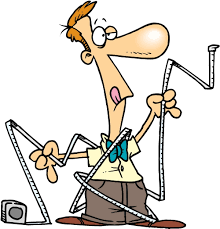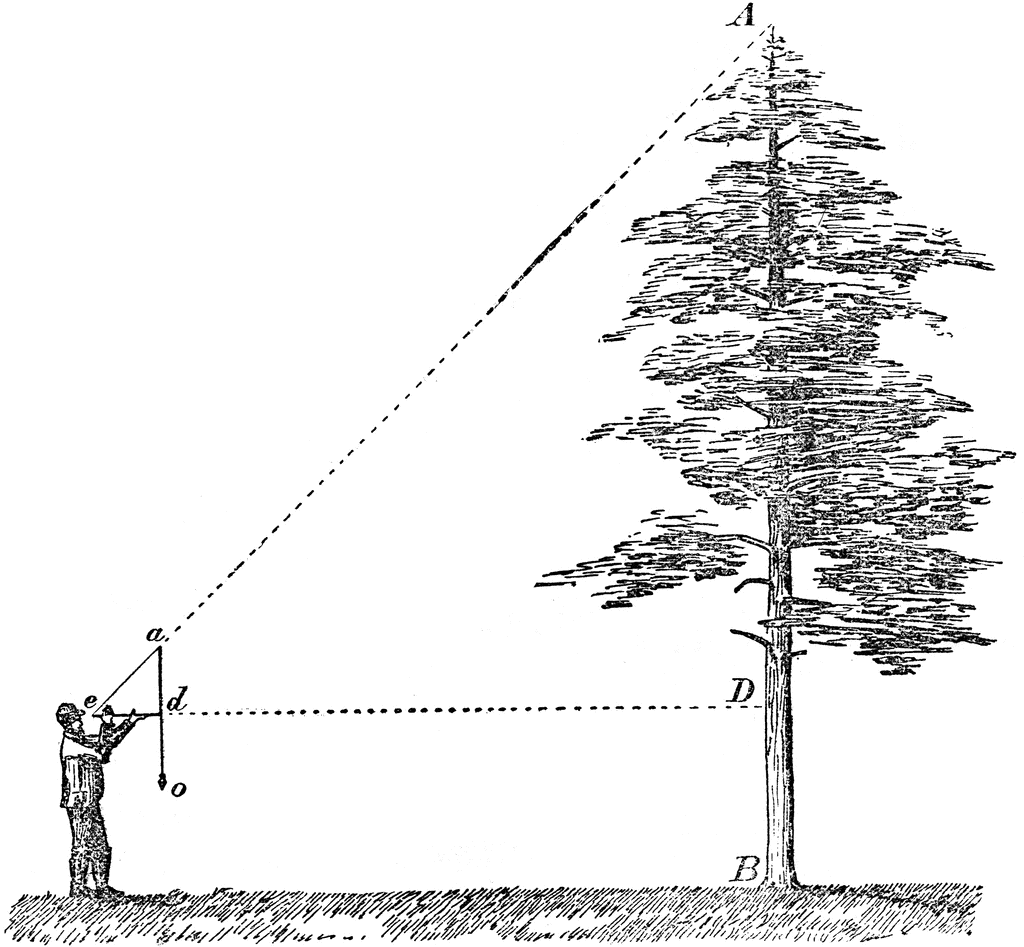
Do you know how to measure?
Just checked the school calendar and saw that the first day of classes this year is a Thursday. Perfect for what I like to do on the first couple of days.
How wide is your bedroom?
After the usual first day stuff (course structure, classroom expectations, etc), I hand out the first assignment. Part I is to measure the width of a room three times with a one-foot ruler, then three times with a 12-foot (or longer) steel tape. The next day we discuss how one can measure the same object with different instrument giving different results. I then put one student's measurements up on the board and ask the question "Which one is the right width of the room?". Usually most students will say that we don't know (and I try to get them to realize that we will never know the exact width). Sometimes, someone will blurt out "the average". Then the discussion leads to the idea that the arithmetic mean is more likely to be closest to the exact value that is any of the individual measurements. It will be the "best guess".
How tall is a car?
Part II of the assignment is to measure the height of a car and to write down how the measurement was done (I give no directions for this part). The class discussion the next day starts first with me asking what is meant by the "height of a car". It doesn't take long to draw it on the board.
Ruffling through the homework pile, I usually find one student's write-up which goes something like "I put one end of the tape measure on the ground and then run it up to the top". I read it aloud and then draw that description on the board, running the marker along the outside of the car on the board
(sometimes getting "That's not what I meant!"). The lesson here is to write clear and precise directions.
I then ask if anyone directly measured that height. We conclude that no one did because Mom or Dad would get mad if holes were drilled through the roof and the floor. So everyone did an indirect measurement, a measurement of something that is related to the measurement we want.
Most everyone did a variation on putting a long board on the top of the car, holding it level to the ground, and measuring the distance between the board and the ground.
All scientists make assumptions; good scientists realize when they do
"So, when you say that the height you actually measured is the same as the height of the car, you are making a basic assumption. What is that assumption?" It takes a while, but with leading questions and other hints, most see that the basic assumption is that they are setting up a rectangle. They are also using the property of rectangles that opposite sides have the same length. At this point I like to remind my students that we are going to be using a lot of the geometry and algebra that they have learned in the math classes they have had already.
Very good scientists ask if the assumptions have validity
"So, convince me that you set up a rectangle." Again, it takes a little bit to get the class to realize that there needs to be at least 3 right angles. It then boils down to having level ground and to holding the board parallel to the ground. All of this is to get students to realize that the act of measuring is more than just reading numbers off a device.
Now, measure the height of a tree

The class wraps up with setting up the next homework assignment which I time for a weekend. I demonstrate in front of the class (at least twice) the forester's technique to measure the height of a tree. You can see this technique
here (the first shown). Whether students measure the height of a tree, a church steeple, a house, or other tall object is immaterial. What is important is an explanation of why the technique works and what assumptions are made. I emphasize that they already know why it works, they just need to think about it. The grading of that assignment is based on a complete and logical explanation.
Most students will realize that it relies on making an isosceles right triangle, but few will see that it really uses two geometrically similar isosceles triangles. I usually have to ask some leading questions in class, my favorite is "Is this enough to show the tree height?". During our in-class discussion, I ask if we have used any new mathematics that they have never seen before. Of course, the answer is "no". I then tell the class (for probably the third time) that they already know the math they need for this class; they just have to think about when they need to use it. This sets one of my expectations for this course; I expect you to remember the important math you have learned in other classes. It will be expected in college.
Just thought of this modification for my AP class.
For my AP students, I have them measure the distance from the starting point to the tree base by pacing (I have my regular physics class measure that distance using a long steel or cloth measuring tape). So we spend time in class getting a personal pace calibration curve. In other words, they make a plot of distance paced vs. number of steps using the practice football field right outside our building. One reason I like to use the marked field is that the hash marks are 5 yards apart so my students have to make some estimations about where their foot is. They get a calibration equation from the best-fit line which is used to get the actual distance paced in feet or meters. Since graphing data and getting a best-fit line is often asked on the AP Exam, this practice starts them with something which already be linear.
These two assignments try to get students to realize that the act of measuring is not a simple one. Much thought should go into all aspects of the procedure and that many times subtle assumptions are made, the validity of which needs be examined. And as with any important lesson, it will have to be repeated many times over the school year.
If I have time at the end of the year, I like to revisit this lab by
measuring the height of a "mountain".








